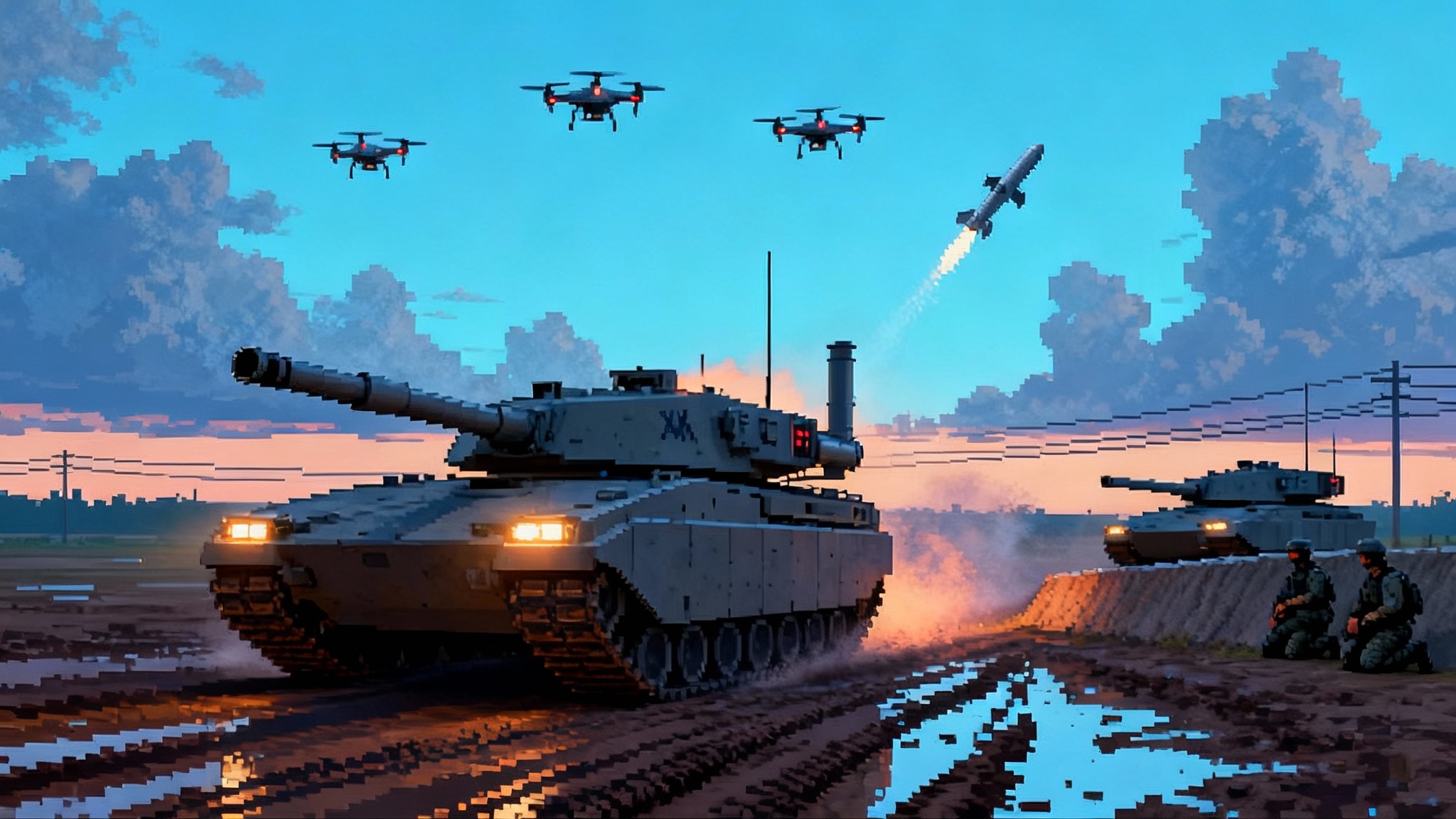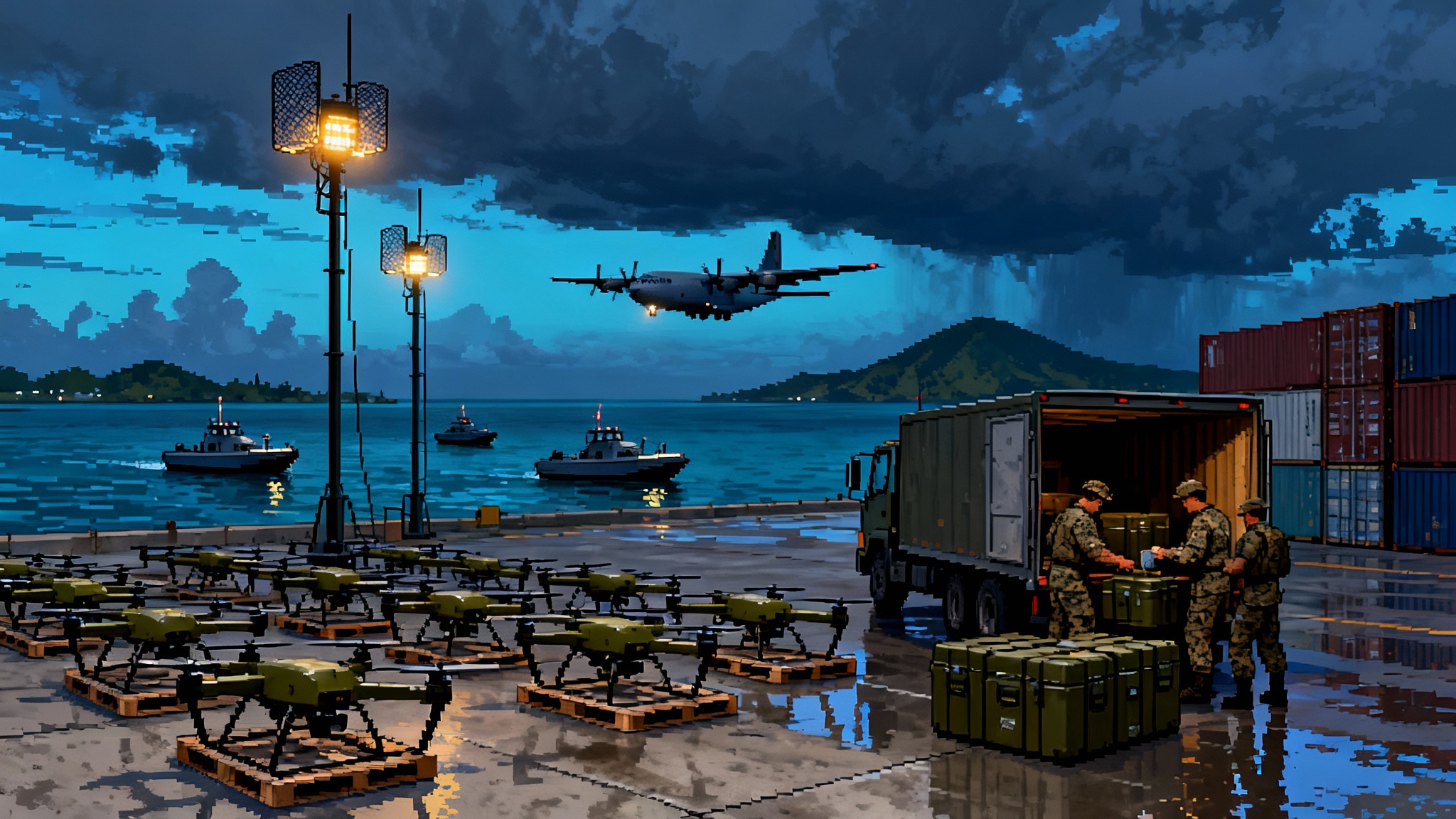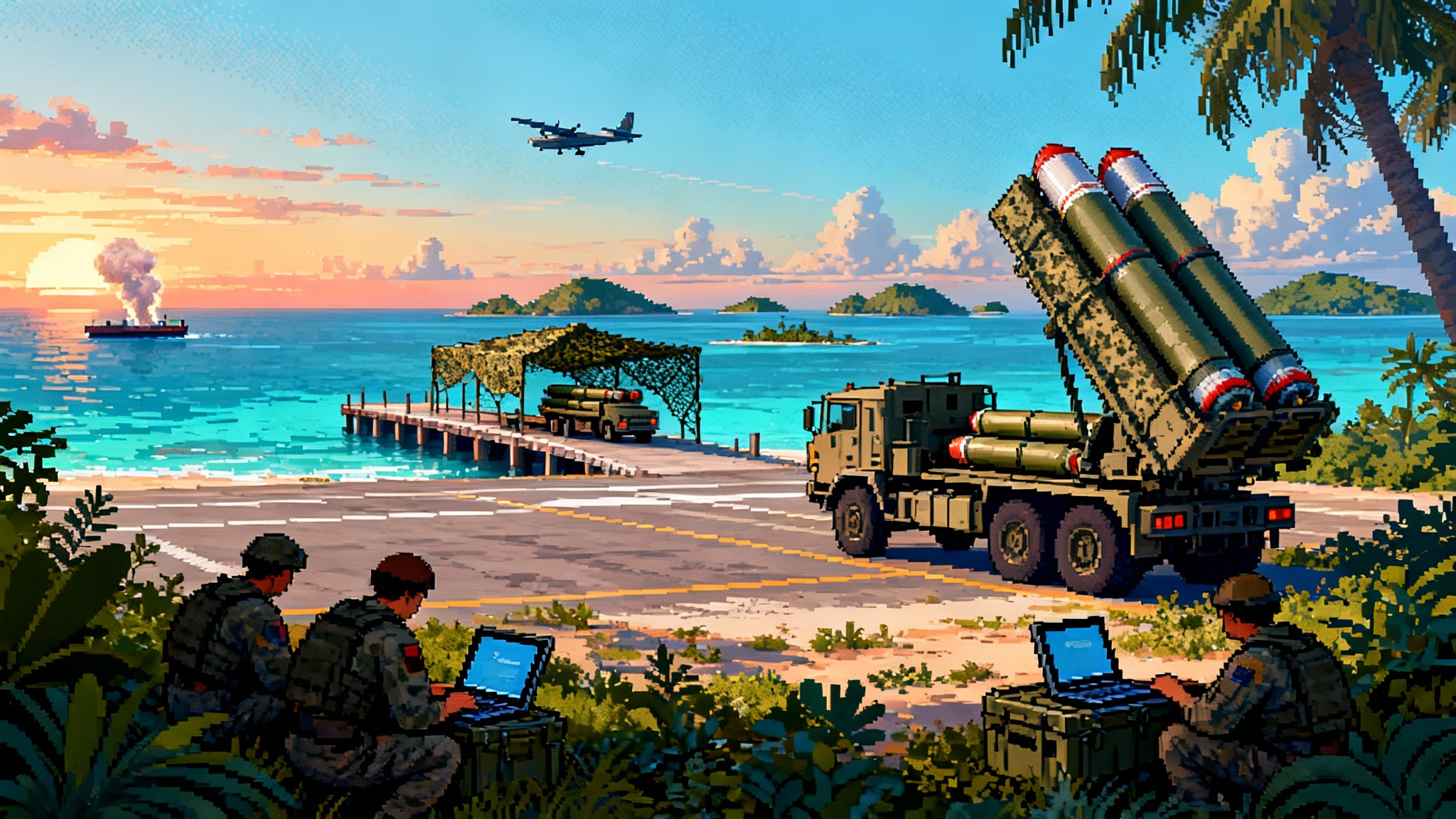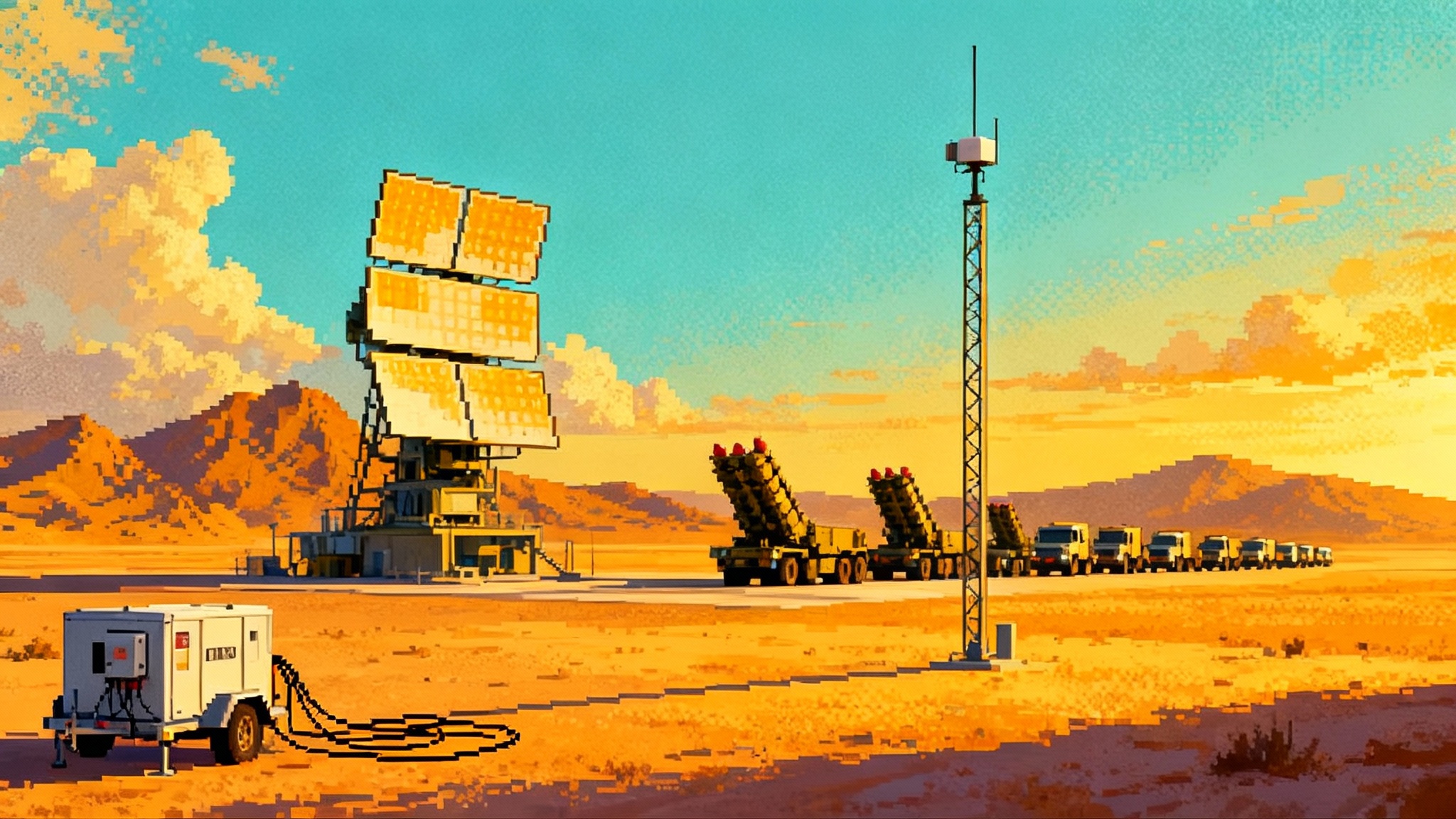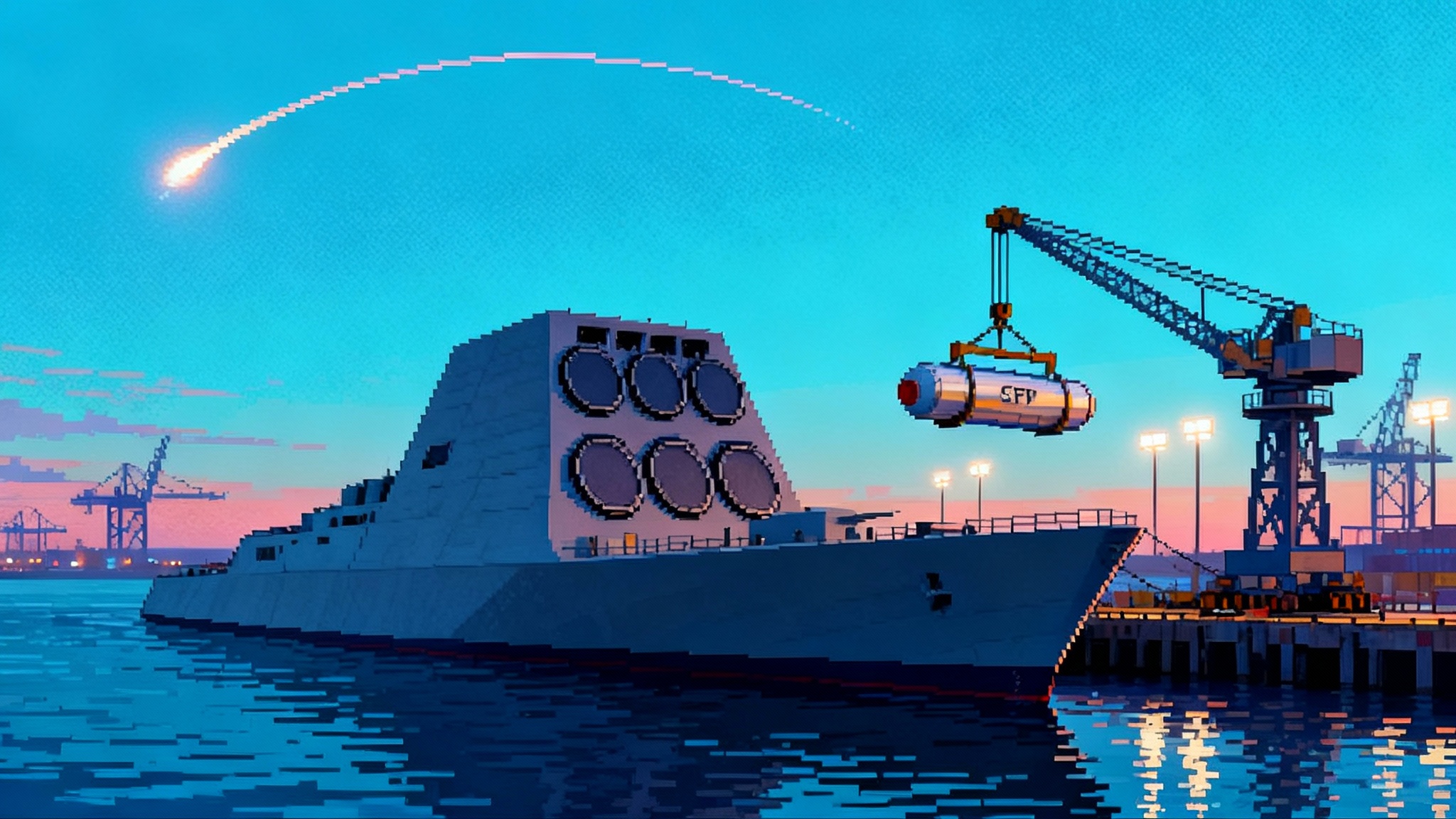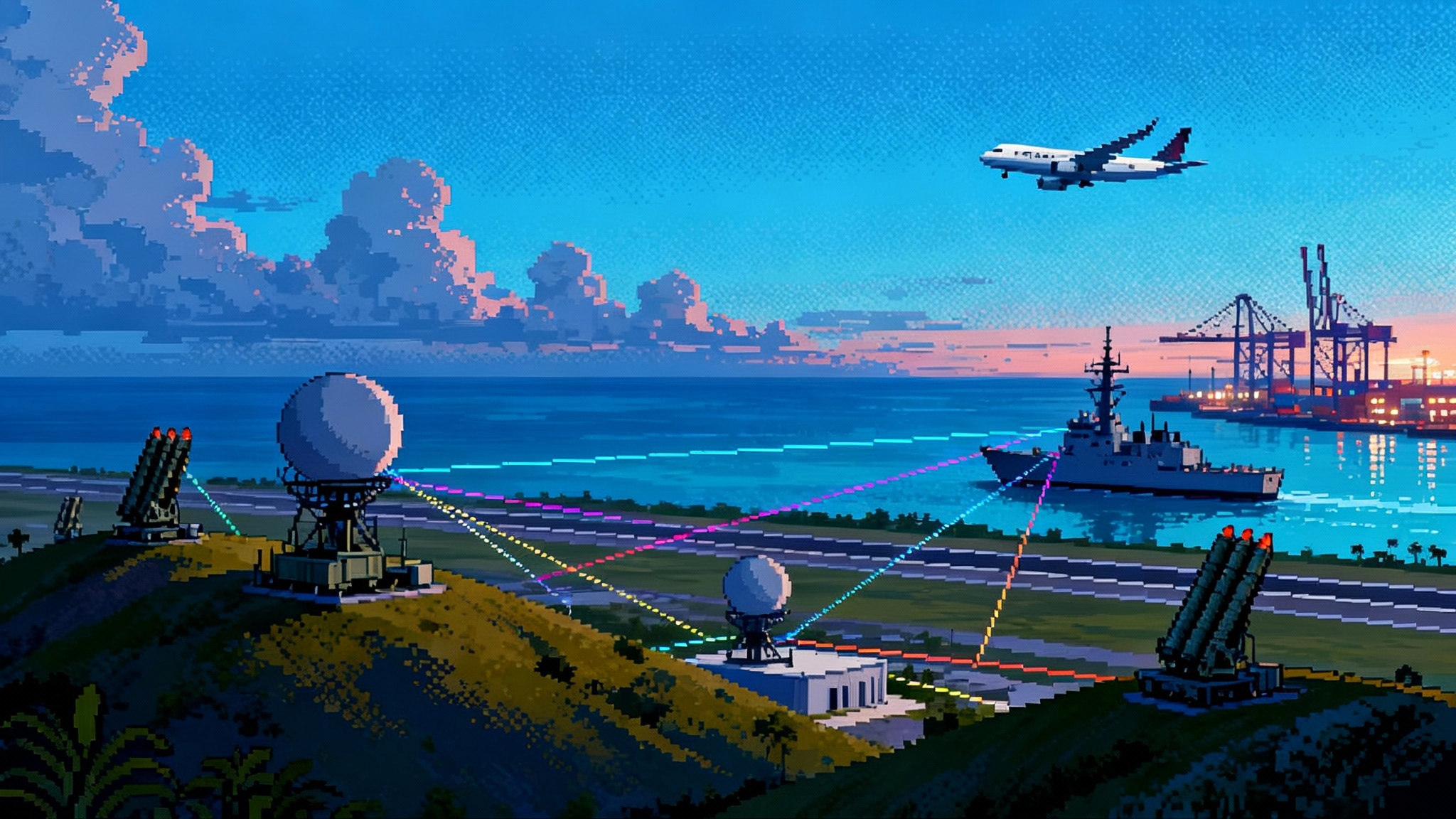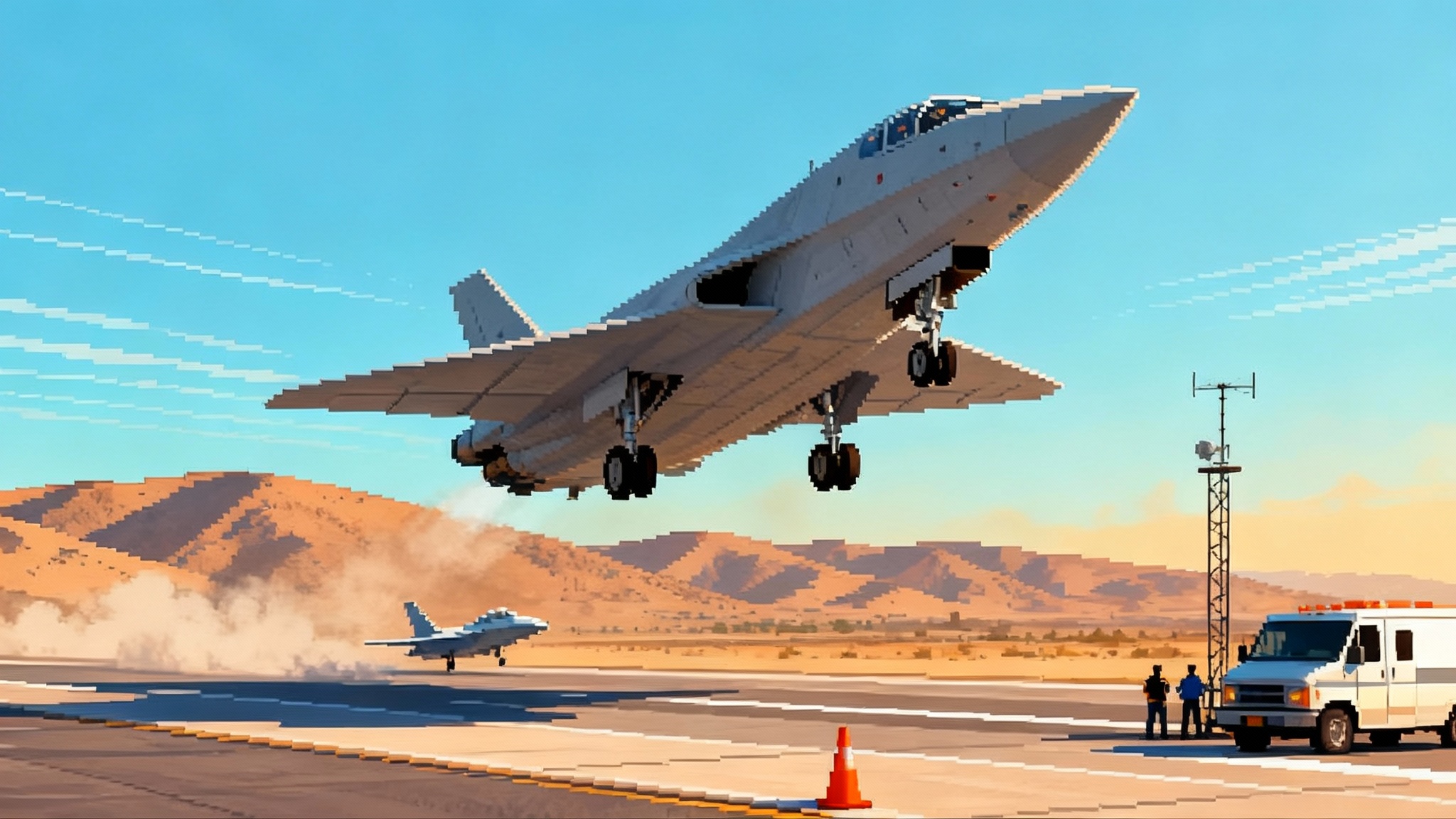Ghost Shark Goes Fleet as Australia Bets on XLUUVs
Canberra just moved Ghost Shark from prototype to program of record, funding a fleet of extra large uncrewed submarines for the Royal Australian Navy. Here is what that shift means for cost, doctrine, and allied adoption.
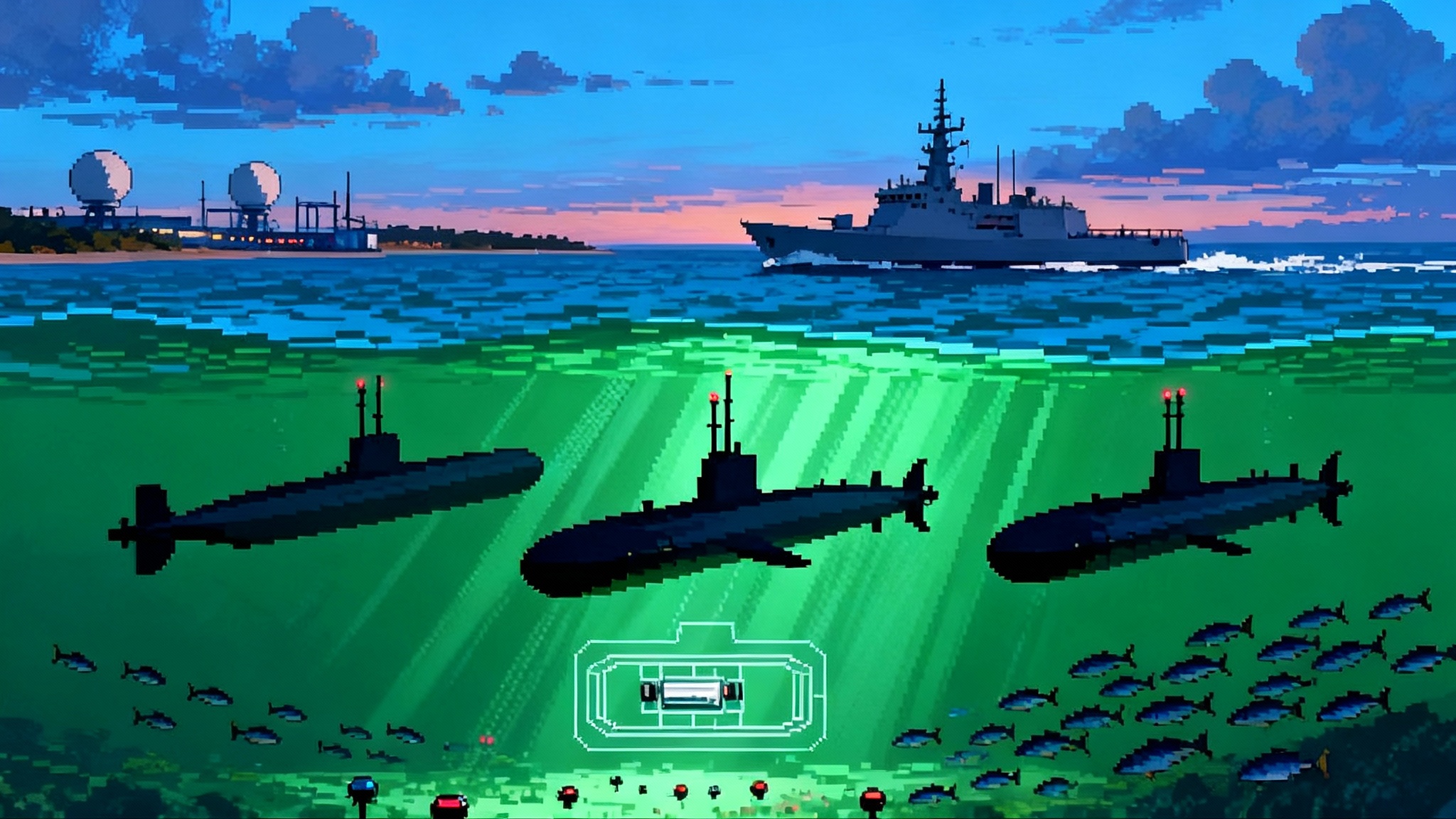
The week autonomous subs became real
On September 10, 2025, Australia did something defense ministries talk about for years but rarely do. It turned a prototype into a product. Canberra awarded a five year, A$1.7 billion contract to build a fleet of Ghost Shark autonomous submarines and made the program a line item in the national defense budget. That is procurement, not a pilot. It means crews will train, bases will prepare, and the Royal Australian Navy will plan patrols around a capability that is finally arriving, not just a rendering on a slide. The moment was sealed by Australia's September 10 procurement announcement.
What just crossed the line
Ghost Shark is an extra large uncrewed underwater vehicle, often shortened to XLUUV. Think of it as a mini submarine without a crew compartment, designed to travel far, carry modular payloads, and operate with a mix of autonomy and remote tasking. The breakthrough is not a single sensor or battery. The breakthrough is that a government has said yes at scale.
Program of record is a dry phrase with big consequences. It triggers stable funding, establishes a baseline configuration, and obligates the customer and the contractor to deliver real numbers on a defined schedule. Ghost Shark now has that handshake. The first units are due to start operating in early 2026, with dozens planned over five years, according to officials and the DSTG update on Ghost Shark fleet.
From prototypes to production, fast
Speed is part of the story. In April 2022, Defence Science and Technology Group, the Royal Australian Navy, and Anduril Australia began a three year co-development program. Three prototype vehicles and multiple payload modules were delivered ahead of schedule, setting the stage for low rate production in 2025 and a rapid scale up. The team used an iterative approach borrowed from commercial robotics: short design loops, frequent sea trials, and a modular payload bay that can accept new sensors without requalifying the whole hull.
The decision compresses what is often a decade of requirements churn into a few budget cycles. Time is both a capability and a cost. When a navy can field something in three years instead of ten, it gets options back. It can learn in the real world, shift tactics in response to adversary behavior, and avoid betting on a single exquisite design that might be outdated by the time it arrives. For a broader pattern of scaling autonomy, see how allies are pushing cheap autonomy at scale.
What an XLUUV actually does
An XLUUV is a robot submarine the size of a small bus. It does not carry people, which lets designers trade crewing needs for power, payload, and endurance. It is batteries and computers inside, wrapped in a hydrodynamic shell. The Ghost Shark concept is built around four core jobs:
- Intelligence and surveillance. Long legs plus quiet operation let it sit on likely transit routes, seabed infrastructure, or straits. It can soak up acoustic, magnetic, and electromagnetic signatures and send snippets back when it can.
- Reconnaissance and targeting. Think of it as the forward scout that feeds positional data to other platforms. If a surface task group is headed north, Ghost Shark can be the eye under the water, ranging ahead to find and fix.
- Strike. Officials have said the platform will have strike roles. That could mean a torpedo, a loitering munition launched from a canister, or a mission kit that enables third party targeting for other shooters. The key is modular payload bays, not a single hardwired weapon.
- Seabed and infrastructure operations. Laying sensors, servicing nodes, inspecting pipelines, or placing non lethal payloads are all within reach for a large uncrewed vehicle that can loiter near the bottom.
If a conventional submarine is a Swiss Army knife, the XLUUV is a kit of power tools. Each mission module is a different bit you attach. The robot does not replace the crewed fleet. It changes what the crewed fleet is used for.
Why cost and risk look different now
There is a reason advocates use the word attritable. It means a navy can afford to lose some and keep fighting. That logic is already accepted in the air domain with uncrewed aircraft and is now moving underwater. A diesel electric submarine has extraordinary capabilities but is a rare and precious asset. A fleet of uncrewed subs is a different proposition. They are not cheap, yet they are affordable enough to send into a choke point, to test a contested sensor line, or to sit in places where retrieving them is not guaranteed.
This changes the playbook. Instead of asking whether a mission is worth risking a crew and a billion dollar hull, commanders can decide how many uncrewed hulls to allocate and for how long. That opens doors to denial operations that were previously too costly. Imagine a picket line of Ghost Sharks across gaps in the first island chain, cueing allied aircraft and surface ships, with some configured as decoys to force an adversary to switch on active sonar and reveal themselves. The goal is to impose choices, not to win a single duel.
The industrial base gets a template
The announcement also maps a new way of building undersea capacity. The five year contract includes delivery, maintenance, and continued development. That sends steady work into the supply chain and avoids the feast or famine pattern that kills small suppliers. Australian officials say more than 40 domestic companies are already part of the Ghost Shark ecosystem, with 150 new skilled jobs at Anduril Australia and hundreds more across partners. The result is a sovereign capability that can export components and, potentially, complete vehicles to allies.
This supply chain is not a side effect. It is the point. If many hands can build and upgrade Ghost Shark, many navies can field it. Shared parts, common payload interfaces, and repeatable test procedures lower cost and raise confidence. That helps allied planners translate experimentation into orders, then into joint operations tied into a wider kill web, as seen in Guam's joint kill web pivot.
How Ghost Shark resets undersea deterrence
Deterrence under the sea has historically rested on a small number of very quiet platforms that can deliver exaggerated effect, especially the submarines assigned to strategic missions. Ghost Shark does not compete with that. It adds a second layer. The presence of many autonomous subs with real range gives planners a way to flood an area with sensors and shooters, not just one or two. A hundred eyes and a handful of claws can beat one set of claws that cannot be everywhere.
The change is partly psychological and partly mathematical. Undersea warfare has always been a hide and seek game. When the seeker can place persistent scouts across likely routes and swap their payloads without telegraphing the change, the hider’s problem gets harder. The cost equation moves toward the defense. If it takes ten times the money and crew hours to hunt a Ghost Shark as it takes to field one, the attacker bleeds time and budget trying to clear lanes.
Another shift comes from the ability to pre position. Uncrewed vehicles can be staged quietly in peacetime near potential flashpoints, then activated if tensions rise. That reduces the response time for a crisis and raises the credibility of a tripwire posture without putting crews in danger.
How it will actually be used
Expect three near term patterns.
- Thickening the screen for crewed submarines and surface groups. Ghost Shark can range ahead and to the sides of a carrier or amphibious group, turning a thin acoustic picture into a layered one.
- Guarding critical infrastructure. Australia has long sea lines and offshore energy. Persistent uncrewed patrols are well suited to watch for tampering or unusual activity around cables and pipelines.
- Chokepoint denial. In narrow waters, uncrewed vehicles can make lingering contacts too costly. A sensor heavy scout can pass tracks to aircraft and surface ships, while a sister vehicle with a strike payload holds the threat of a shot.
These uses assume a robust command and control concept. You do not need a high bandwidth link to steer every move. The vehicle can work from a mission plan and send back snippets when it gets a clear path to transmit. Think of communication not as a constant stream but as postcards. That is how long endurance underwater systems survive.
The adoption playbook allies can copy
Australia just wrote a manual others can lift. If you are in an allied navy or defense ministry weighing uncrewed underwater systems, here is a practical template derived from Ghost Shark’s path.
-
Start with a tight triangle. Put a small set of accountable partners in the room: the navy user community, a government science and acquisition shop, and an industry lead. Keep the decisions close and the iterations short.
-
Fund for speed, not perfection. Aim for three to four years from concept to limited operations. Accept that the first fielded block will lack some features. Place those features on a roadmap with named delivery windows.
-
Build the payload first. Create a clean mechanical and electrical interface, then develop a handful of mission modules in parallel. Prove the interfaces in sea trials and let third parties build to the standard.
-
Decide what makes it safe. Write the autonomy guardrails early. Define the conditions under which a vehicle must abort, who can arm or disarm a weapon, and how consent flows. Codify these rules in software and test harnesses before you scale production.
-
Buy training and sustainment with the hulls. Do not separate procurement of vehicles from procurement of the people and tools that keep them working. This keeps the learning cycle alive and prevents hangar queens.
-
Make export a feature. From day one, design the paperwork and technical data package so allies can plug in. Work with your export control office to pre approve configurations for partners. The goal is coalition mass, not a national one off.
-
War game constantly. Use live runs at sea coupled to digital twins and simulation. Treat every exercise as a software update opportunity. If a mission plan failed during a fleet drill, patch and try again next month, not next year.
This is what fast follow looks like. A country does not need to invent everything to benefit. It needs to adopt a process that rewards fielding and learning. Parallel efforts in air show the same pattern, including the USAF uncrewed fighters production race.
The hard problems that still matter
Ghost Shark’s leap to production does not erase the challenges of underwater autonomy. A few deserve special attention.
- Communications. Water hates radio. Passing messages will rely on burst transmissions, acoustic modems, or riding a mast to the surface. This forces careful mission design. Commanders must think in windows and waypoints, not a continuous tether.
- Classification and targeting. An autonomous vehicle that misclassifies a contact can create serious risk. The answer is conservative engagement rules, third party verification where possible, and a bias for non kinetic effects unless a human has authorized a shot.
- Countermeasures. An adversary will try to jam acoustic links, spoof navigation, and net or snag the vehicle. Designers should plan for graceful degradation. If a sensor fails, the vehicle should continue a reduced mission or return home.
- Maintenance. Uncrewed does not mean maintenance free. Salt water is a universal solvent. The fleet will need steady diagnostic tools, swap in line replaceable units, and spare hulls for surge.
Solving these problems is part of the value. Each fix becomes a commodity capability that can be sold to allies and reused in the next generation.
Industry and workforce, explained simply
If the vehicle is the headline, the factory is the story. The contract funds not just hulls but the people who write code, pour composites, and test in tanks. Australia is setting up a repeatable line. That creates predictability for small suppliers who make connectors, batteries, and quiet electric motors. Predictability attracts capital. Capital buys better tooling, which lowers unit cost and raises quality.
This is how a niche experiment becomes an export. If Australia can demonstrate that Ghost Shark comes off the line on time, with a clear upgrade path, customers will pay for certainty as much as capability. And if the payload interface is open enough, domestic industry in partner nations can develop their own mission kits and slot them into Australian hulls without political pain.
What to watch in 2026
Three milestones will tell you whether this shift has stuck.
- First fleet exercises with crewed submarines and surface combatants. Look for evidence that Ghost Shark is feeding targeting information and receiving tasking without slowing the manned platforms.
- An export ready payload. A mine countermeasures kit or a seabed survey package would be a good early candidate because it is easier to share and proves the interface.
- A published safety case for autonomous strike. This can be classified in parts, but a public outline of safeguards and human authorization flows would help allies adopt similar systems without reinventing the wheel.
If those three land, Ghost Shark will go from a national project to a coalition capability.
The bottom line
Australia has pulled XLUUVs over the threshold. The country turned a promising prototype into a funded fleet and did it on a timeline measured in a few years. The effect is bigger than one contract. It gives navies a way to create affordable, long range, attritable mass under the sea and a playbook to follow. The next moves belong to allies who will decide whether to copy the template or stick with slow roll pilots. The water is cold, but the path is marked. Time to get in.
